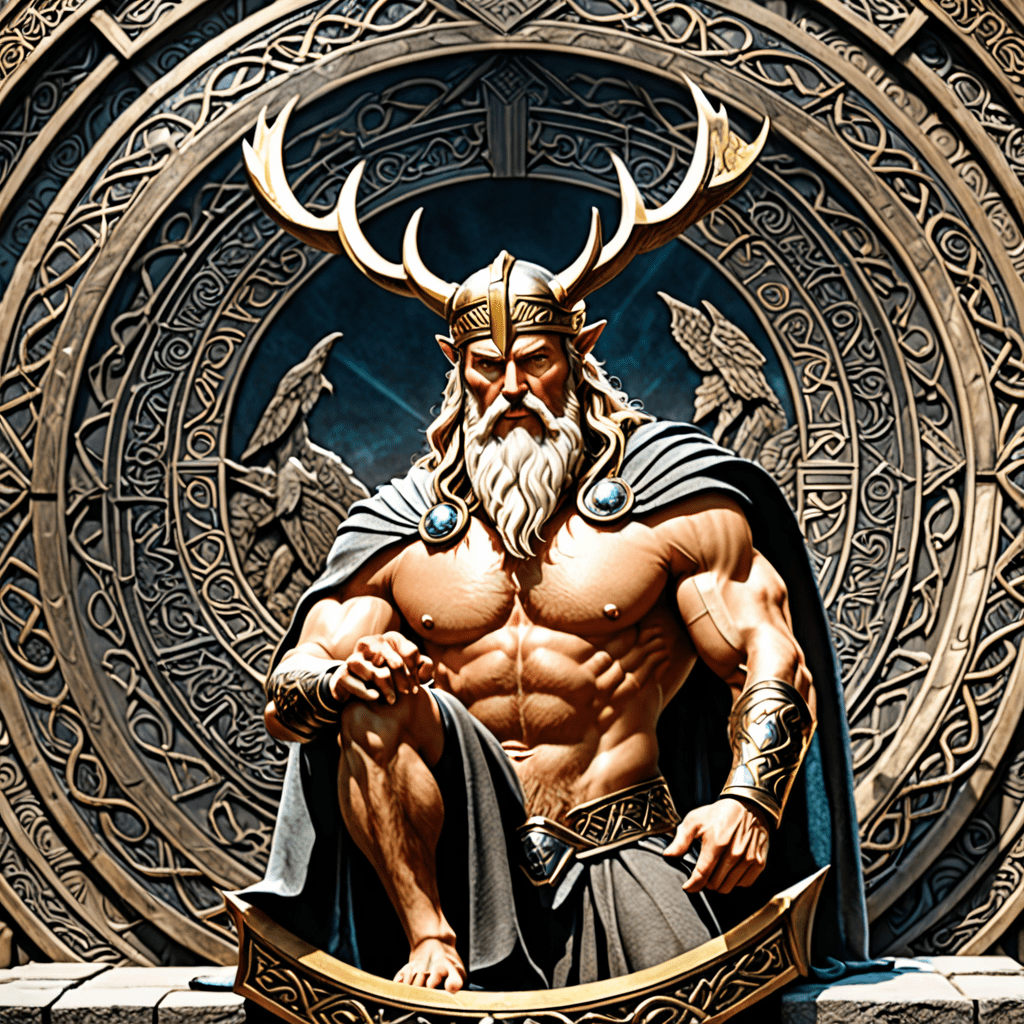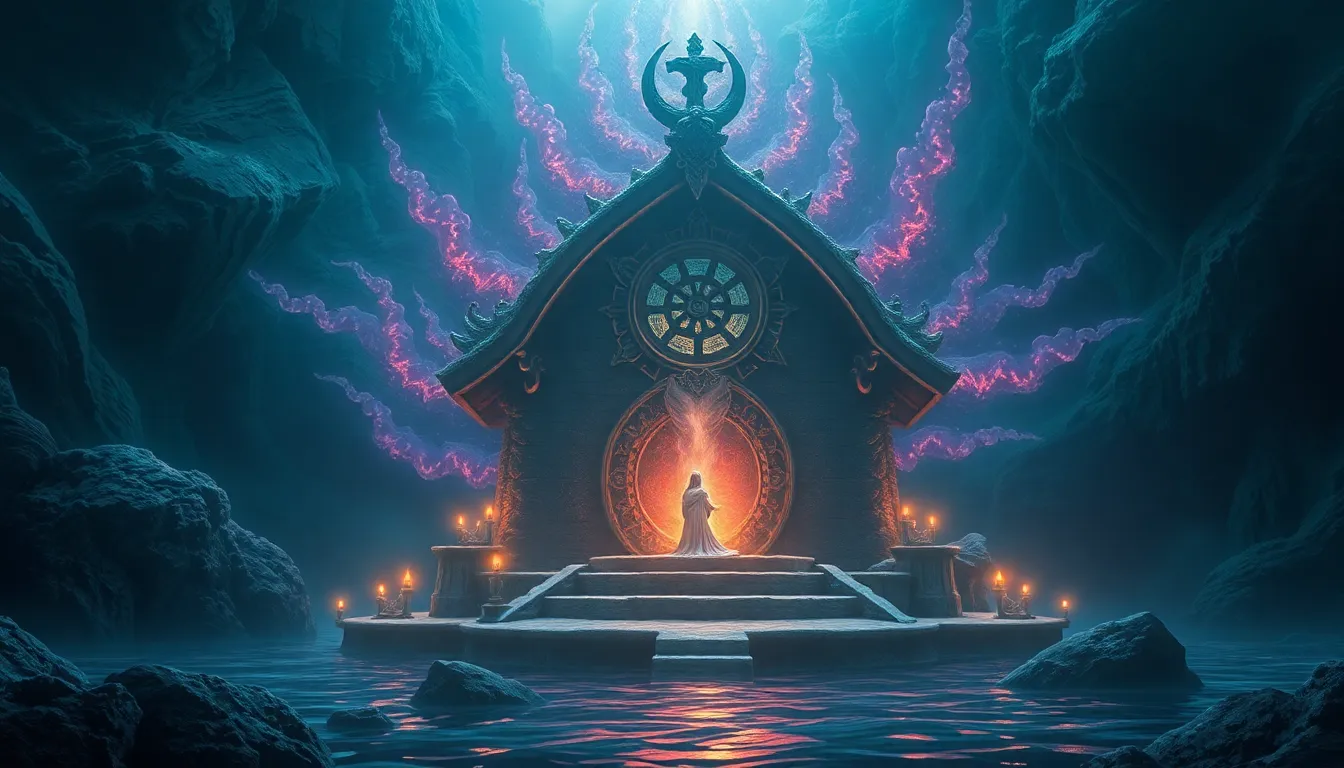The Arena of Legends: Epic Mythological Showdowns!
I. Introduction
Mythological figures have captivated human imagination for centuries, serving as embodiments of cultural values, moral lessons, and the eternal struggle between good and evil. From the valiant heroes of Greek mythology to the cunning tricksters of Norse legends, these characters resonate deeply with humanity’s quest for understanding and meaning.
The idea of an “arena” where these legendary figures clash invokes a sense of drama and excitement. Envisioning these mythological battles allows us to explore the significance of these characters and the lessons they impart. This article endeavors to delve into iconic mythological showdowns, examining their backgrounds, conflicts, and the enduring legacy they have left in our culture.
II. The Nature of Mythological Showdowns
Mythological showdowns encapsulate battles that are not merely physical confrontations, but also represent deeper philosophical and moral conflicts. These encounters often embody the struggle between opposing forces, such as chaos versus order, good versus evil, or fate versus free will.
- Definition: Mythological battles are narrative devices that showcase the conflicts between gods, heroes, and mythical creatures.
- Characteristics: These battles often feature dramatic stakes, complex character motivations, and consequences that extend beyond the immediate conflict.
Conflict in mythology serves crucial purposes:
- It teaches lessons about morality, ethics, and the human condition.
- It reflects societal values and cultural beliefs, providing insight into the worldview of the civilization.
III. Greek Mythology: Titans vs. Olympians
In Greek mythology, the struggle between the Titans and the Olympian gods is one of the most pivotal conflicts. The Titans, led by Cronus, ruled during the Golden Age, but their reign was challenged by the Olympians, led by Zeus.
A. Background on the Titans and the Olympian gods
The Titans were powerful deities who personified various aspects of the world. The Olympians, emerging from their overthrow, represented a new order of gods who governed the universe with a focus on justice and morality.
B. Key battles: The Titanomachy
The Titanomachy was a ten-year series of battles fought between the Titans and the Olympians. This epic conflict culminated in the defeat of Cronus and the Titans, marking the rise of the Olympians as the dominant pantheon.
C. Legacy of the Titan vs. Olympian conflicts in popular culture
The themes of the Titanomachy have influenced numerous works of literature, film, and art. The struggle for power, the overthrow of tyranny, and the rise of new ideals resonate through various narratives, from classical literature to modern adaptations like the “Percy Jackson” series.
IV. Norse Mythology: Ragnarok and the Final Battle
Ragnarok represents the ultimate battle in Norse mythology, a prophecy of destruction and renewal that encompasses both gods and monsters.
A. Overview of Ragnarok and its significance
Ragnarok is not just a battle; it signifies the end of the world as it is known, leading to a rebirth. It involves a series of events, including natural disasters, the death of major deities, and the final confrontation between the gods and their foes.
B. Major figures involved: Odin, Thor, Loki, and others
Key figures in this cataclysmic event include Odin, the Allfather; Thor, the god of thunder; and Loki, the trickster god. Their roles emphasize themes of sacrifice, betrayal, and the cyclical nature of life.
C. The aftermath of Ragnarok and its cultural implications
The aftermath of Ragnarok leads to the emergence of a new world, highlighting themes of rebirth and renewal. This narrative has influenced modern storytelling, symbolizing hope amidst chaos.
V. Hindu Mythology: The Kurukshetra War
The Mahabharata, one of the largest epics in the world, narrates the story of the Kurukshetra War, a battle between two factions of the same royal family.
A. Introduction to the Mahabharata and its epic scale
The Mahabharata is not just a tale of war; it is a complex exploration of duty (dharma), righteousness, and the nature of justice, woven into the fabric of a monumental conflict.
B. Key characters: Arjuna, Krishna, Duryodhana, and others
Arjuna, a great warrior, faces moral dilemmas on the battlefield, guided by Krishna, who serves as his charioteer and divine counselor. Duryodhana represents ambition and injustice, providing a counterpoint to Arjuna’s quest for righteousness.
C. Themes of duty, righteousness, and the moral dilemmas of war
The Kurukshetra War raises profound questions about morality, loyalty, and the consequences of conflict, making it a timeless study of human nature.
VI. Egyptian Mythology: Osiris vs. Set
The rivalry between Osiris and Set is central to Egyptian mythology, illustrating themes of death, resurrection, and the struggle for power.
A. The story of Osiris and Set’s rivalry
Set, representing chaos and disorder, murders his brother Osiris, the god of the afterlife, in a bid for power. Osiris’s resurrection by his wife, Isis, symbolizes hope and renewal.
B. Themes of resurrection and the struggle for power
This myth encapsulates the Egyptian belief in the afterlife and the cyclical nature of life and death, emphasizing the importance of balance in the universe.
C. Impact of this myth on Egyptian beliefs about the afterlife
The Osiris myth profoundly influenced Egyptian burial practices and beliefs about resurrection, shaping their understanding of life beyond death.
VII. Mesopotamian Legends: Gilgamesh and Enkidu vs. Humbaba
The Epic of Gilgamesh is one of the earliest known works of literature, chronicling the adventures of Gilgamesh and his friend Enkidu as they confront the monstrous Humbaba.
A. Overview of the Epic of Gilgamesh
This epic explores themes of friendship, heroism, and the quest for immortality, offering insights into human nature and the struggles faced by individuals.
B. The battle against Humbaba: friendship and bravery
The confrontation with Humbaba, the guardian of the Cedar Forest, symbolizes the triumph of human courage and camaraderie over fear and the unknown.
C. Significance of this showdown in understanding human nature
Through this showdown, the epic delves into the complexities of friendship, mortality, and the human experience, resonating with audiences across millennia.
VIII. The Role of Monsters and Beasts in Mythological Battles
Monsters and mythical creatures often play crucial roles in mythological battles, serving as representations of chaos, fear, and the darker aspects of human nature.
A. Common mythical creatures and their symbolic meanings
- Hydra: Symbolizes the complexity of problems and the difficulty of overcoming challenges.
- Grendel: Represents the outsider, embodying societal fears and the consequences of alienation.
B. Iconic battles: Hercules and the Hydra, Beowulf and Grendel
These legendary confrontations highlight the struggle between heroes and monsters, illustrating the triumph of human virtue over malevolence.
C. How monsters represent inner and societal conflicts
Monsters often embody the fears and challenges faced by individuals and societies, making their defeat a metaphor for overcoming personal and collective struggles.
IX. The Influence of Mythological Showdowns in Modern Media
Mythological showdowns continue to resonate in modern media, influencing literature, film, and video games.
A. Adaptations in literature, film, and video games
Many contemporary narratives draw inspiration from mythological themes, reimagining classic tales for new audiences. Examples include:
- Clash of the Titans – A cinematic retelling of Greek myths.
- God of War – A video game series that explores Greek and Norse mythology.
- American Gods</



